1. Debounce Manual Gate Pushbutton
The MANUAL GATE pushbutton on my UEG has a tendency to jump two or three steps whenever I am using it in GATED-STEP mode. This has frustrated me to no end rendering the pushbutton almost useless. I put together a simple debounce circuit that uses only 3 passive components and reduces the number of false triggers from 50% to 1%. This is not as elegant as a 555 timer-based solution, but it works well enough given its simpicity.
The circuit comprises a capacitor (CX) that is charged (through RX) and discharged (through R11) as the pushbutton is pressed and released. Diode DX prevents the circuit from affecting the external GATE input.
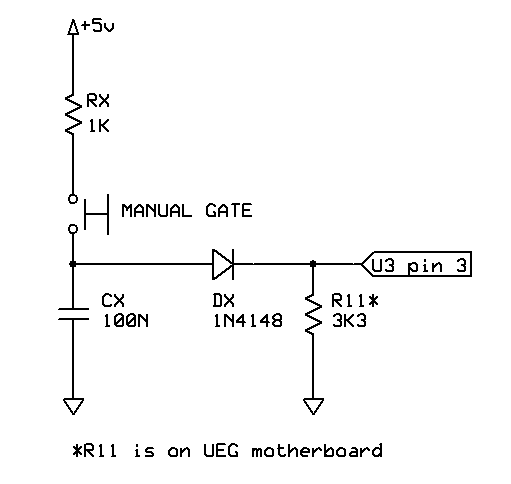
Here are some before and after shots showing how the capacitor smooths out any switch bouncing. These traces were measured on U3 pin 3. In the before shot, there is a second pulse that causes a false trigger when the pushbutton is released. In the after shot, the capacitor lengthens the release time so that the switch bounce does not cause a false trigger.
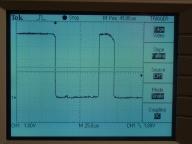 |
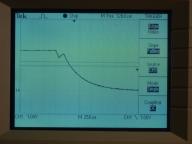 |
| Before |
After |
Procedure
- Isolate the pushbutton by breaking two traces on the backside of the motherboard. These traces should be broken as close to the pushbutton as possible (see arrows in picture below). Be careful not to cut the traces that connect the external GATE input to U3.
- Add a 1K resistor (RX) from +5V to one end of the isolated pushbutton (see picture below).
- Add a 100N capacitor (CX) from the other end of the isolated pushbutton to GND. I used a GND connection on one side of R11, a 3.3K resistor (see picture below).
- Add a 1N4148 diode (DX) from the isolated pushbutton (same pin where CX is attached) to pin 3 of U3. I made this connection not on U3 but at one end of R10, a 10K resistor (see picture below).
- The discharge resistor, R11, is already on the motherboard so there's no need to add this.
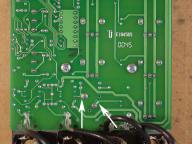 |
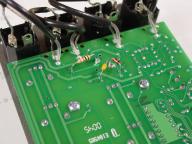 |
| Isolate Pushbutton |
Add Components |
|

